An award-winning builder asked the industry back in July why Perth is “the only region in Australia still predominantly building double brick homes”. The company’s director said in a media release that he believes brick is being superseded by modern timber frame homes.
While there might have been a shift in material choice, architects and builders in Australia have continued to specify bricks in a variety of applications, from residences to public buildings.
The material has experienced many advances in recent years, especially on the sustainability front. Its benefits range from being a hard wearing, low-maintenance building product that will not fade, twist, wrap, rot or decay, to good acoustic and thermal performance, and fire resistance.
Bricks also offer design flexibility, possessing a timeless quality, whilst new innovations have introduced more contemporary varieties, such as PGH Bricks’ urban metal collection which consists of four fully glazed metallic finishes.
Here are five Australian projects that have used bricks creatively, and made the material the highlight of their designs:
HOME
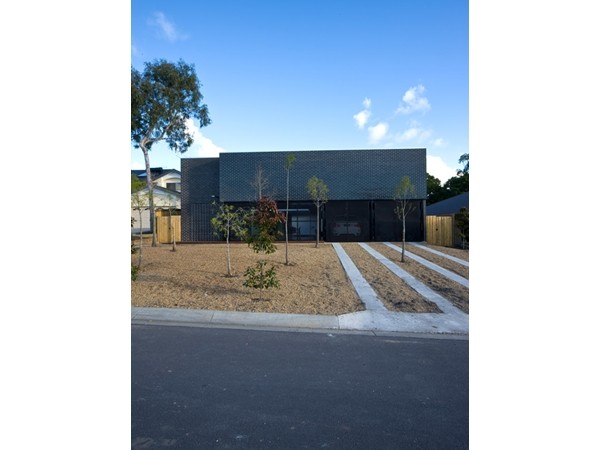
Bisley Place House by James Russell Architect
Winning the Robin Dods Award for Residential Architecture – Houses at last year’s AIA Queensland Architecture Awards, Bisley Place House by James Russell Architect shows how bricks can be utilised to create a modern home.
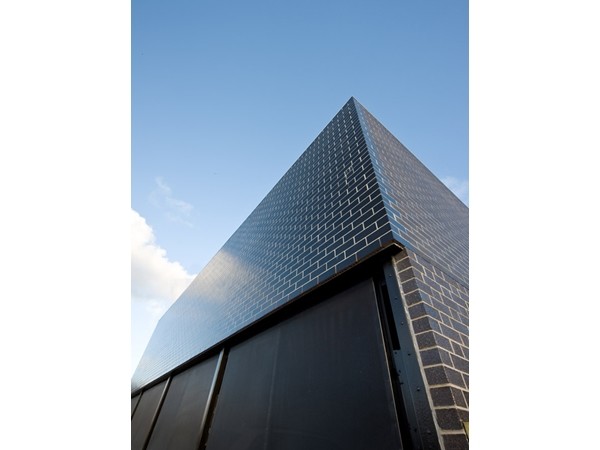
Images: Eric Victor. Source: designplace
Featuring an envelope of face brickwork and concrete, both self-finished, the ground floor brickwork was laid in a decorative Flemish bond, whereby the end of every second brick laid is displayed. Austral Bricks’ Burlesque fully-glazed, high gloss bricks, combined with a waterproof mortar, are balanced by Metallix Emery, a dark brick with a silky, metallic finish.
PUBLIC
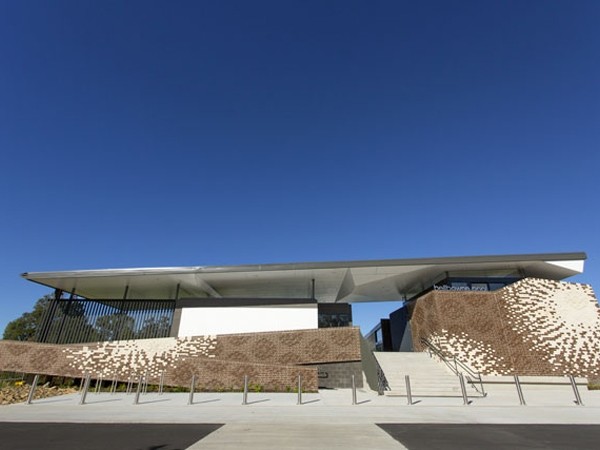
Bellbowrie Pool by bureau^proberts
Bureau^proberts were engaged by the Brisbane City Council to design a flood-resistant pool facility in Bellbowrie in the wake of the 2011 Brisbane floods. Inspired by overland flow and river flooding, the new pool facility comprises two pavilions with a feature brick wall facing the street.
This brick wall utilises residential brickwork, and features a pattern referencing the flowering gums familiar to the area. A large free-form gum flower is represented in white, understandable from the street and clear from the canvas of brown bricks with flower motif.
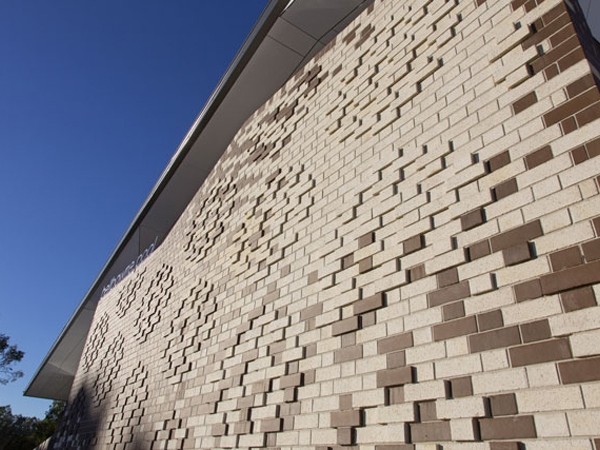
Images: PGH Bricks
The entire wall was also created using a Flemish bond brick laying pattern, which allows the patterns to change as visitors move towards and away from the building. PGH Bricks’ Crevole and Nutmeg bricks were used for the project.
REUSE
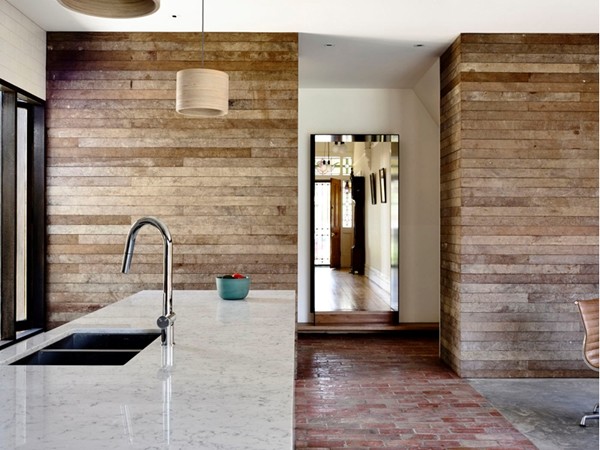
Northcote Residence by Wolveridge Architects
The Northcote Residence by Wolveridge architects is a refurbishment of an early 20th century dwelling. Designed to meet the challenges of family life, the architects created living spaces that were intimate in scale, noting that a full, open plan living arrangement would limit flexibility.
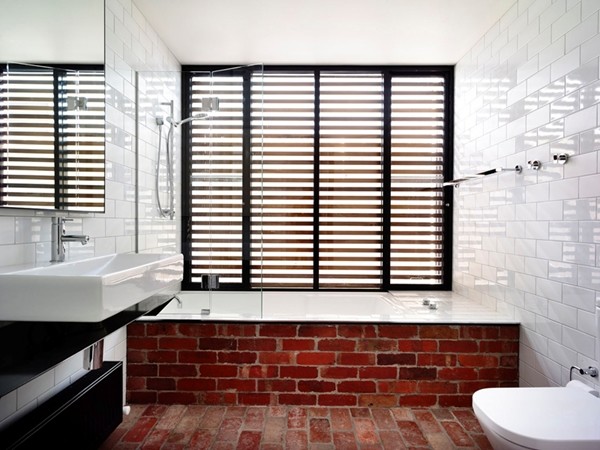
Images: Wolveridge Architects
A robust palette of bricks, concrete and steel was employed for the project, but it is the use of old bricks found in the backyard of the existing home that steals the show. Creating a pathway through the home’s extensions, the red bricks meander from the original building, through the living areas and outside into the garden, where it ends at the swimming pool.
The recycled bricks were also utilised to create a junction between the old and new spaces, morphing into a free standing, double-sided fireplace structure.
FORM
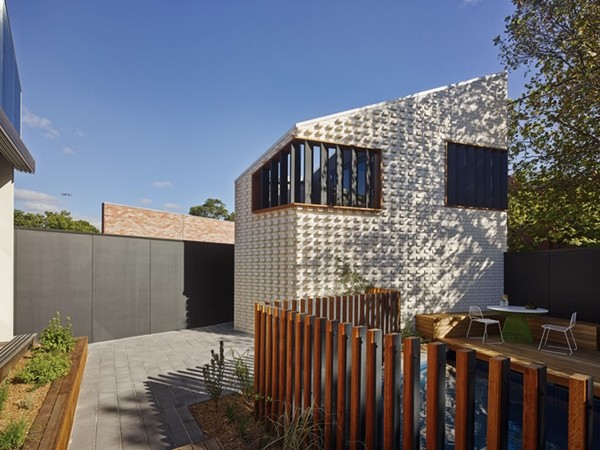
Little Brick Studio by MAKE Architecture
Essentially a garage with a studio space above, this building is squeezed into a tight space in Abbotsford, one of Melbourne’s inner city suburbs. It attempts to engage with the urban scale of the busy rear street, but also sits sensitively with the smaller scale residential homes behind.
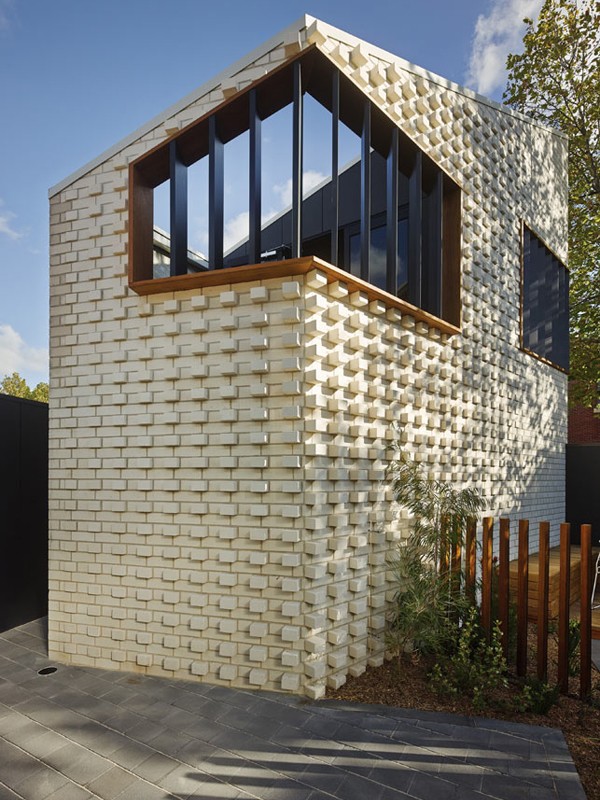
Images: Peter Bennetts. Source: MAKE Architecture
The textured brick finish was inspired by the nearby brick factories, its bond developed by MAKE’s founder Melissa Bright some years ago. The practice went on to design its own brick pattern, utilising Austral Bricks’ Charolais Cream bricks to create an eye-catching façade with a rich texture.
FUTURE
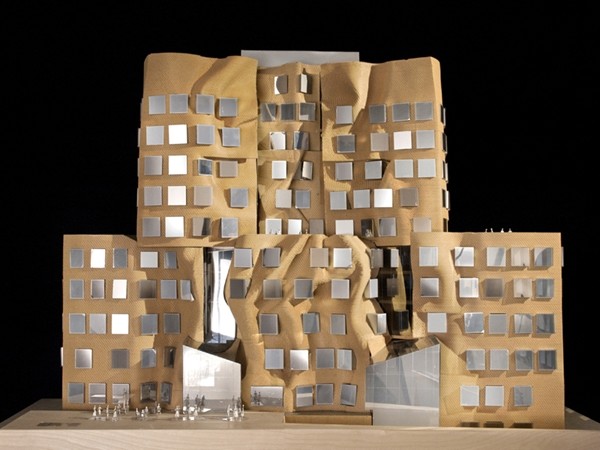
Dr Chau Chak Wing Building, UTS by Gehry Partners
Love it or hate it, it is undeniable that the new Gehry building for University of Technology, Sydney (UTS) uses the simple brick to its fullest extent. The building’s east façade consists of 320,000 buff-coloured bricks that undulate like fabric, chosen to reference Sydney’s sandstone heritage.
This is juxtaposed against the western façade of angular glass shards that reflects the city back to itself, marking the contrast between modern Sydney and its urban brick heritage.
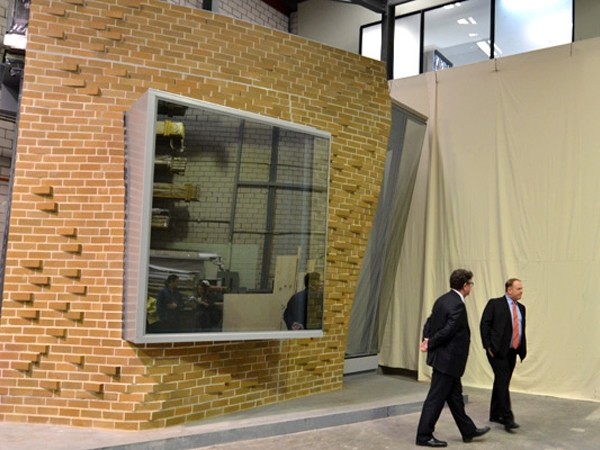
A scale prototype of the buiding's brickwork developed by façade contractor Sharvain. Image: Terry Clinton. Source: UTS
The fluid brickwork however, has proven to be a technical feat. According to UTS, five custom-made brick shapes supplied by Austral Bricks were developed and will be laid by hand, individually, against special reinforcing panels. The brickwork will be corbelled, with individual bricks jutting out as the façade curves.
The play of light on these corbelled bricks will accentuate the curves, and change the ‘colour’ of the façade as the light changes.
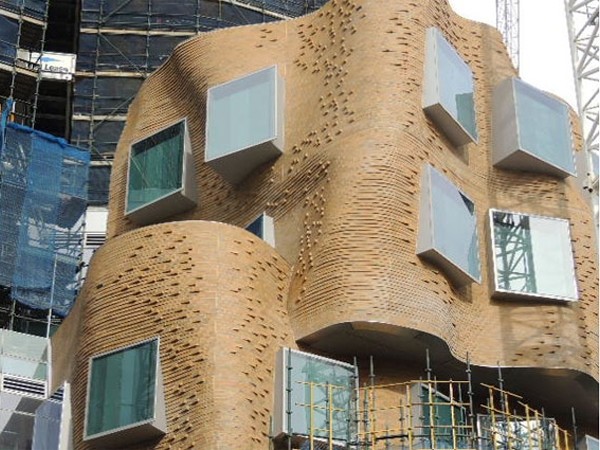
Some of the building’s brickwork has already been unwrapped (Image: Property Observer)

